WiFi Antenna Extension Cable Guide: Types, Length & Performance
Sep 08,2025
Introduction
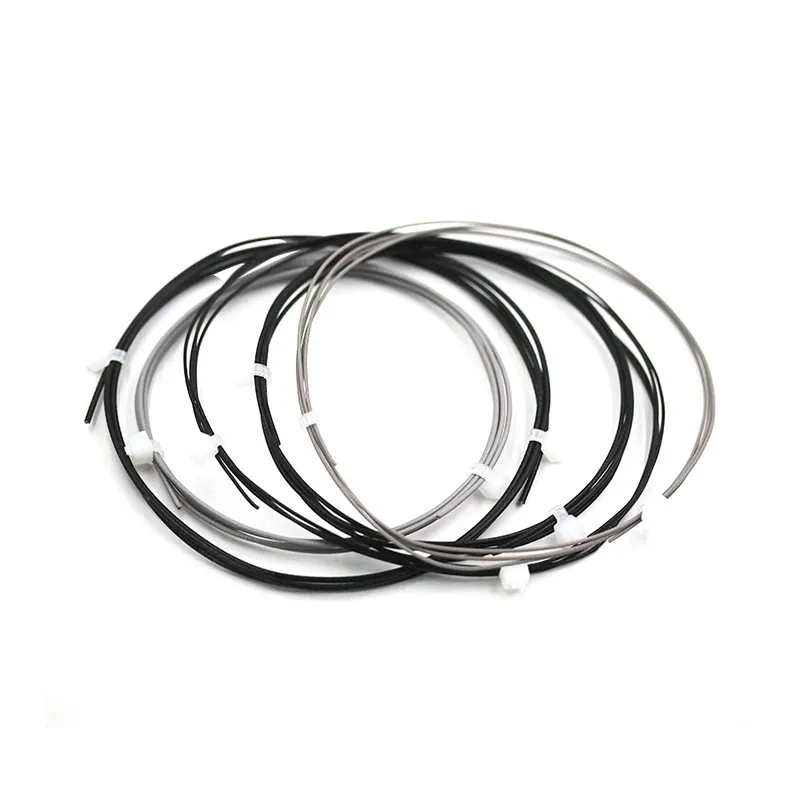
This image is a clean, high-resolution product photograph of a typical WiFi antenna extension cable. It features the cable itself, likely a 1-meter or 1.5-meter length, laid out against a neutral background. The focus is on the RP-SMA male connector on one end (characterized by its external threads and, upon close inspection, the center socket indicative of RP-SMA) and the RP-SMA female connector on the other end (with internal threads and a center pin). The specific type of coaxial cable (e.g., RG174, identifiable by its thinness and black PVC jacket) is also visible. The image serves to familiarize the user with the physical product they would receive, emphasizing the connector types and cable flexibility that are central to the guide's discussion.
Anyone who has tried streaming in a back room or setting up a Wi-Fi camera outdoors knows the pain: the router stays inside, but the antenna ends up stuck in a poor spot. That’s when a WiFi antenna extension cable can save the day. Instead of relocating the entire device, you simply shift the antenna to a higher or clearer location—and often the difference in coverage is immediate.
Naturally, people ask the same questions: Do WiFi router antenna extension cables really work? and Are they worth it? The answer is yes, when chosen correctly. The details matter though—things like RP-SMA vs SMA polarity, coax construction, and how much loss comes with each cable type. For instance, an rg174 extension cable (2.85 mm OD, 50 ±2 Ω) is flexible and widely available, but it introduces about 0.82 dB of loss per meter at 2.4 GHz. RG178, slimmer at 1.8 mm, handles –55 °C to +200 °C and uses silver-plated copper conductors, while LMR-100 keeps loss much lower (roughly 0.49 dB per meter at 2.4 GHz) thanks to its dual shielding.
By the end of this guide, you’ll see why small choices—cable type, polarity, or even using a waterproof bulkhead—can make or break your setup. A quick tip from field experience: installers often regret skipping waterproofing or strain relief; those “minor” steps can save hours of troubleshooting later. For a deeper look at related assemblies, see our SMA Extension Cable Guide.
What Is a WiFi Antenna Extension Cable?
A WiFi antenna extension cable is nothing more than a coaxial lead designed to move the RF port of your router, access point, or IoT gateway to a better position. Instead of relocating the entire device, you only extend the antenna itself. This makes it easier to place the antenna where it performs best—on a wall, outside of a cabinet, or even through a panel.
The most common builds are SMA or RP-SMA male-to-female cables. One end threads into the device, while the other end accepts the antenna. It sounds simple, but choosing the right type matters. Wi-Fi runs on the 2.4 GHz and 5 GHz bands, both requiring a consistent 50 Ω impedance. Using the wrong cable, such as a 75 Ω TV coax, will cause mismatch and degraded performance.
Different coax types bring their own trade-offs. RG174, with its 2.85 mm diameter, PE insulation, and PVC jacket, bends easily and is inexpensive—but at 5 GHz, expect around 1.4 dB loss per meter. By contrast, LMR-100 uses foil plus braid shielding, keeping loss closer to 0.9 dB per meter at 5 GHz, making it better for longer outdoor runs. RG178 is even slimmer (1.8 mm OD) and highly heat-resistant (up to 200 °C), ideal for compact or high-temperature installs.
From real-world setups, many connection problems don’t come from the coax at all. They usually happen because of mismatched connectors. Always confirm if your device requires RP-SMA (common on Wi-Fi routers) or SMA (often found on GPS or cellular gear). Getting this wrong is one of the most frequent mistakes users make. For more on this, see our RF Coaxial Cable Guide.
RP-SMA vs SMA (Polarity & Compatibility)
Polarity is where many users get tripped up. A typical Wi-Fi router almost always uses RP-SMA connectors, but at first glance, they look almost identical to standard SMA. The difference isn’t electrical—it’s mechanical. RP-SMA simply swaps the gender of the center pin compared to SMA, which is why mismatches happen so easily.
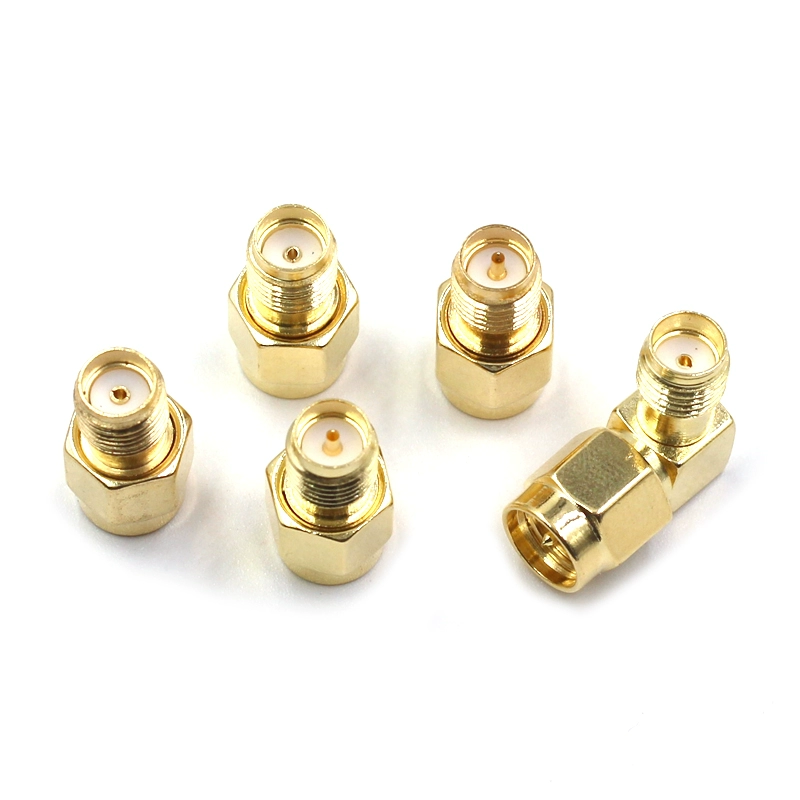
This image is a detailed macro shot focusing on the RP-SMA connector type, which is emphasized as the standard for most consumer Wi-Fi routers. The key detail shown is the center socket (hole or receptacle) instead of a pin, even though the external threads are male. This visual clarification is crucial for preventing the common compatibility mistake mentioned in the document, where users confuse RP-SMA with standard SMA. The image helps users correctly identify the connector on their own equipment before purchasing an rp sma extension cable.
- RP-SMA – Found on most Wi-Fi routers, USB Wi-Fi adapters, and consumer access points. It usually comes as a threaded shell with a female center socket, even when the body looks “male.”
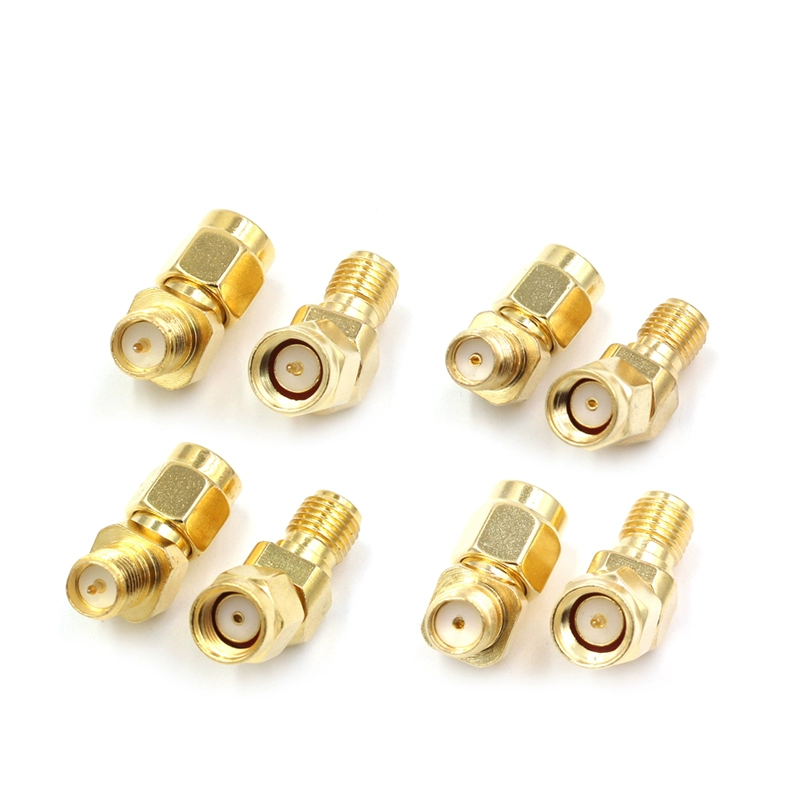
This image serves as a direct comparison to Figure 2. It provides a detailed macro view of a standard SMA connector, which is noted as being common in GPS receivers, LTE modules, and RF test equipment. The key distinguishing feature clearly shown is the solid center pin protruding from the connector, alongside the male external threads. This side-by-side contrast with the RP-SMA socket helps users visually understand the polarity difference that prevents these two connector types from mating, a critical point for ensuring compatibility and avoiding damage.
- SMA – Common in LTE modules, GPS receivers, and RF test gear. This version typically has a male center pin inside the threaded housing.
Here’s the catch: an rp sma extension cable will not connect properly to a standard SMA port. Unless you add an RP-SMA to SMA adapter, the two types won’t mate, and forcing them can bend or break the connector pin. I’ve seen installers make this mistake during rushed setups—it not only wastes time but sometimes damages the router’s RF port.
So which should you choose? For routers and Wi-Fi cameras, it’s almost always an RP-SMA male-to-female extension cable. For GPS and cellular equipment, go with standard SMA. A quick visual inspection—checking both the thread and the center conductor—can prevent headaches before you even place the order.
For a deeper breakdown of SMA connector gender and polarity, see our What Is SMA Connector? Guide.
Common Cable Types
When looking at WiFi antenna extension cables, three coax families appear over and over again: RG174, RG178, and LMR-100. Each offers a different balance of size, flexibility, and signal performance. Picking the right one depends on whether you value convenience, durability, or low loss.
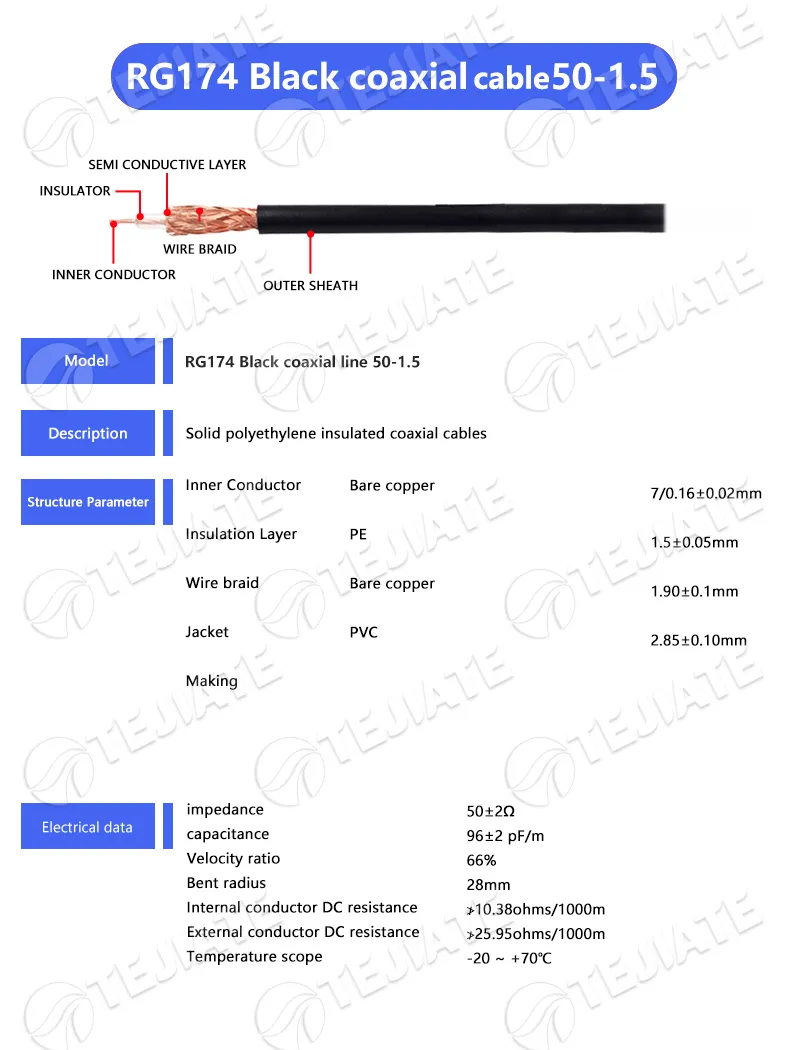
This image is a technical illustration or cross-section photograph that breaks down the components of RG174 coaxial cable, the "workhorse of consumer Wi-Fi setups" as described. It visually details the layers listed in the spec table: 1) The central Bare Copper Conductor (7 strands of 0.16mm). 2) The white PE (Polyethylene) Insulation layer. 3) The Bare Copper Braid shield. 4) The outer Black PVC Jacket. This helps users understand the materials and construction that define the cable's flexibility, electrical properties (50 Ω impedance, ~0.82 dB/m loss at 2.4 GHz), and its limitations (higher loss at 5 GHz).
- RG174 – At 2.85 mm OD, this is the workhorse of consumer Wi-Fi setups. It uses a bare copper conductor with PE insulation and a PVC jacket, rated at 50 ±2 Ω impedance. Flexible and affordable, it bends easily around tight corners. The drawback? Loss builds up quickly—roughly 1.4 dB per meter at 5 GHz. For short runs, an rg174 extension cable is the most common and cost-effective choice.
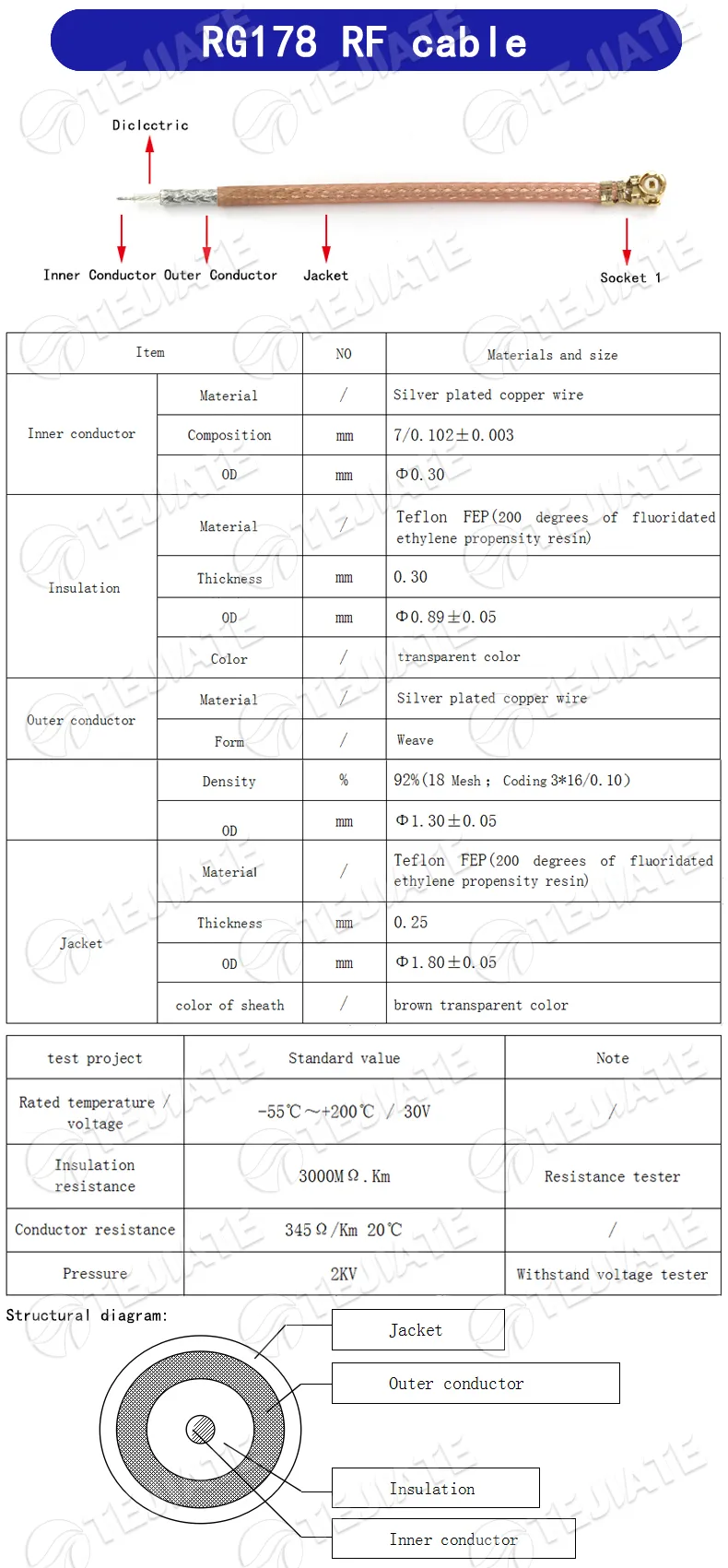
This image is a product shot focusing on the physical characteristics of RG178 coaxial cable. It highlights the cable's exceptionally slim outer diameter (1.8 mm), which is even thinner than RG174. The cable likely has a distinctive shiny or silver-gray appearance due to its FEP (Teflon) jacket and silver-plated copper conductor, which are key features mentioned for its high-temperature resistance (up to 200 °C) and use in compact spaces. The image helps users identify this specialized cable and understand its niche application where size and heat are more critical than achieving the absolute lowest signal loss.
- RG178 – Slimmer at 1.8 mm OD, with a silver-plated copper conductor and Teflon FEP jacket. It handles extreme temperatures (–55 °C to +200 °C) and offers about 92% shielding coverage. It’s often used in compact or high-heat installs, though attenuation is higher than LMR-class cables.
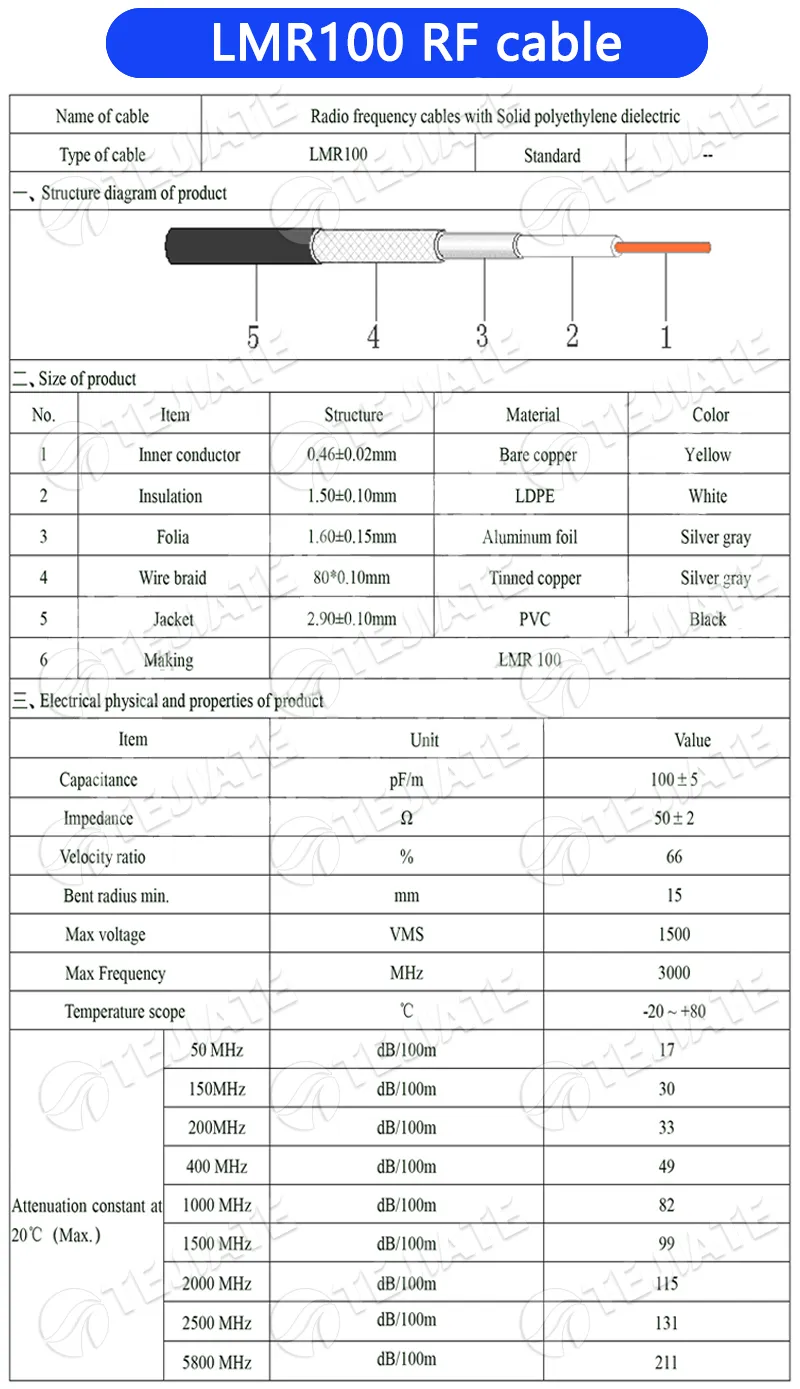
This image presents LMR-100 coaxial cable, the recommended low-loss option for longer or outdoor Wi-Fi extensions. The cable appears slightly thicker (2.9 mm OD) than RG174, reflecting its more robust construction with dual shielding (aluminum foil + copper braid). The jacket may have printing indicating the cable type (e.g., "LMR-100") and specifications, underscoring its quality and intended use. This visual reinforces the textual advice: while LMR-100 is less flexible than RG174, its superior shielding and lower attenuation (~0.49 dB/m at 2.4 GHz) make it the smarter choice for runs beyond 2-3 meters or for outdoor applications where signal integrity is paramount.
- LMR-100 – A low-loss coax with 2.9 mm OD and dual shielding (foil + braid). It keeps attenuation down to ~0.49 dB per meter at 2.4 GHz, making it a strong choice for outdoor extensions or longer runs. Slightly stiffer than RG174, but worth it if performance matters.
From a practical standpoint: if you’re just extending a router antenna by 1–2 meters inside, RG174 gets the job done. For outdoor APs or runs longer than 2 m, LMR-100 is worth the upgrade. In tight builds where every millimeter counts, RG178 fits where others won’t.
Coax Choices & Specs
Choosing a coax for a WiFi antenna extension cable usually comes down to one trade-off: flexibility versus performance. Thinner cables like RG174 bend easily, while thicker low-loss options like LMR-100 keep your signal cleaner over distance. Which matters more depends on your installation.
Here’s a side-by-side comparison, based on real TEJTE product specs:
| Cable Type | Outer Diameter | Impedance | Capacitance | Attenuation @2.4 GHz (per m) | Temp Range | Notes |
|---|---|---|---|---|---|---|
| RG174 | 2.85 mm | 50 ±2 Ω | 96 pF/m | ~0.82 dB | -20 ~ +70 °C | Flexible, economical, common in router cables |
| RG178 | 1.80 mm | 50 Ω | 100 pF/m | ~1.2 dB | -55 ~ +200 °C | Slim, Teflon jacket, silver-plated conductor |
| LMR-100 | 2.90 mm | 50 ±2 Ω | 100 pF/m | ~0.49 dB | -20 ~ +80 °C | Dual shielding, low-loss, better for outdoor runs |
A quick field note:
- RG174 works fine inside routers or small enclosures, but once you go beyond 2–3 m at 5 GHz, loss starts eating signal quality.
- LMR-100, while a bit stiffer, is the smarter pick for outdoor installs or longer runs.
- RG178 is a specialist cable—compact and heat resistant—used where space or temperature is more critical than low loss.
If you’re unsure which to pick, think about your environment first. Short, flexible runs indoors? Stick with RG174. Compact boards or modules under heat stress? Use RG178. Longer or outdoor runs? Step up to LMR-100. For more details on coax use in embedded boards, see our U.FL to SMA Cable Guide.
Length vs Loss
The length of a WiFi antenna extension cable often matters more than people expect. Every extra meter introduces attenuation, and the effect is much harsher at 5 GHz than at 2.4 GHz. That’s why technicians always advise: keep it short unless you absolutely need the distance.
Here’s a quick comparison of RG174 vs LMR-100 at common Wi-Fi frequencies:
| Cable Type | 1 m | 2 m | 3 m | 5 m |
|---|---|---|---|---|
| RG174 @ 2.4 GHz | ~0.8 dB | ~1.6 dB | ~2.4 dB | ~4.0 dB |
| RG174 @ 5 GHz | ~1.4 dB | ~2.8 dB | ~4.2 dB | ~7.0 dB |
| LMR-100 @ 2.4 GHz | ~0.5 dB | ~1.0 dB | ~1.5 dB | ~2.5 dB |
| LMR-100 @ 5 GHz | ~0.9 dB | ~1.8 dB | ~2.7 dB | ~4.5 dB |
What this means in practice:
- At 1 m, any coax will do. Even RG174 introduces less than 1 dB of loss, which is hardly noticeable.
- At 2–3 m, the difference shows. A rg174 extension cable at 5 GHz may already cut into throughput, while LMR-100 still holds steady.
- At 5 m, the gap is dramatic. RG174 eats about 7 dB at 5 GHz, while LMR-100 keeps it closer to 4.5 dB. That’s the difference between a usable link and one that constantly drops.
One lesson from field installs: sometimes moving an antenna up by just 1 m on a short cable gives a bigger improvement than running a long extension across the room. The cable gives flexibility, but too much length cancels out the advantage.
For more detail on attenuation and impedance, see our RF Coaxial Cable Guide.
Waterproofing & Panel Mount
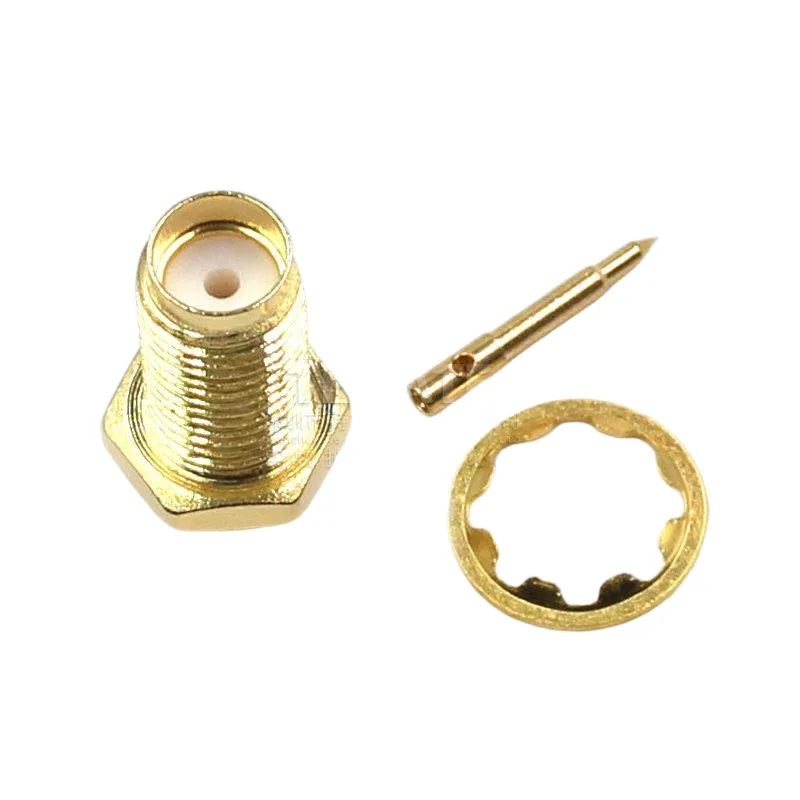
This image focuses on a specific variant of the RP-SMA bulkhead connector mentioned in the context of panel mounting and waterproofing. It prominently showcases a significantly extended thread length on the connector's barrel. Compared to a standard bulkhead connector, this longer thread (e.g., 17mm, 21mm, or even 33mm as noted in the text) is designed to pass through thicker materials like metal panels or reinforced outdoor enclosure walls. The image likely includes a nut and washer, demonstrating how the assembly secures the connector and compresses the O-ring (not always visible) against the panel for a seal. This visual addresses the practical selection criteria discussed: matching the connector's thread length to the specific thickness of the installation panel.
The moment an antenna goes outdoors, waterproofing becomes critical. A typical solution is a bulkhead RP-SMA extension cable, which lets the connector pass through a wall or panel. To block out rain and dust, manufacturers usually include O-rings, washers, and a securing nut. When installed correctly, this setup can reach IP67-style protection. Skip this step, and even a few drops of water can corrode the connector, leading to sudden Wi-Fi drops or permanent damage.
For longer outdoor runs, pay attention to the cable entry point as well. A feed-through gland or rubber grommet prevents water from following the coax into the housing. And don’t forget bend radius: RG174 requires about 28 mm, while LMR-100 needs at least 15 mm. Over-bending compresses the dielectric, raises VSWR, and shortens the life of the cable.
At TEJTE, stock is plentiful, so standard builds are always available. But if your project needs something specific—like an RP-SMA bulkhead with a 21 mm thread length for a thick steel enclosure, or an outdoor-rated cable with reinforced O-ring sealing—we also support custom assemblies. Many installers rely on this flexibility to adapt to different housing designs without compromising reliability. For more bulkhead and sealing guidance, see our SMA Extension Cable Guide.
Right-Angle vs Straight & Strain Relief

This image is a detailed product shot of a right-angle RP-SMA connector itself, not necessarily attached to a cable. It clearly shows the connector's 90-degree bent form factor. The specific gender is likely a male plug (as it's a common terminator for extension cables), characterized by its external threads and, crucially, the center socket that identifies it as RP-SMA (not standard SMA). The image highlights how the RF axis is turned perpendicular to the cable's direction, allowing the cable to run flush along an enclosure wall or PCB, saving space and minimizing the bend radius required immediately behind a device port. This directly illustrates the mechanical advantage discussed for "tight enclosures, like compact routers or IoT gateways," preventing strain and simplifying installation where clearance is limited.
Connector orientation isn’t just a cosmetic detail—it can decide whether your setup runs smoothly or ends up stressed from day one. A straight RP-SMA antenna extension cable works perfectly when there’s enough clearance behind the router or access point. It keeps the coax aligned and avoids unnecessary bends.
But in tight enclosures, like compact routers or IoT gateways, a right-angle connector makes life easier. It prevents the coax from jamming into nearby components and reduces stress on the port. I’ve seen installs where skipping a right-angle option led to cables pressing against a housing wall, eventually loosening the connection over time.
Strain relief is another detail people often overlook. If the coax hangs freely without support, the constant pull can weaken or even damage the port. A simple clip or zip tie close to the connector solves this. With thinner cables like RG178, which are more delicate, proper support is especially important to avoid kinks or fatigue.
Some assemblies even mix both styles. For instance, you might use a straight bulkhead RP-SMA jack to pass through a panel, then attach a right-angle plug on the inside to clear other components. TEJTE keeps standard assemblies in stock, but also handles custom requests, so you’re not limited to one orientation. Picking the right shape upfront makes installation cleaner and helps your hardware last longer.
Compatibility & Do They Work?
So, do WiFi antenna extension cables really make a difference? The answer is yes—when used correctly. They’re especially useful in situations where the stock antenna is stuck in a bad spot: inside a metal cabinet, behind thick walls, or too close to noisy electronics. By relocating the antenna with an extension, you often see an immediate improvement in coverage.
But there are limits. If you stretch an rg174 extension cable to 5 m at 5 GHz, you’ll lose around 7 dB of signal. That’s enough to cut your link margin in half. In those cases, either shorten the run or use a low-loss coax like LMR-100. The cable isn’t a signal booster—it simply gives you placement flexibility.
A surprisingly common mistake is confusing coax with USB. People sometimes think, “Can’t I just use a USB extension cable for my Wi-Fi antenna?” The short answer is no. A USB lead carries digital data and power, not RF signals. Plugging an antenna into a USB extension won’t extend Wi-Fi at all—it’s like trying to run water through an electrical cord. An rp sma extension cable, on the other hand, is designed for exactly this job, carrying 2.4 GHz and 5 GHz RF with the correct 50 Ω impedance.
In short, extension cables do work, but only if you choose the right polarity (RP-SMA vs SMA), the right length, and the right coax. Get those three things wrong, and you’ll probably see more problems than benefits. For a deeper technical view, see our RF Coaxial Cable Guide.
Selection Checklist
Picking the right WiFi antenna extension cable is easier if you walk through a clear checklist. Think of it like a pre-install note engineers use before heading onsite:
- Connector type – First, check if your device uses RP-SMA (most Wi-Fi routers and cameras) or SMA (common in GPS and LTE). A mismatched connector won’t just fail—it can bend the center pin.
- Frequency band – Decide whether you’ll rely mainly on 2.4 GHz, 5 GHz, or both. Loss at 5 GHz is roughly double, so the choice of coax becomes more critical.
- Length – Keep runs as short as possible. A 1 m rg174 extension cable adds less than 1 dB of loss, but 5 m can eat 7 dB at 5 GHz. That’s a connection killer.
- Cable type – Choose based on environment: RG174 for short indoor runs, RG178 for compact high-heat spaces, or LMR-100 for longer and outdoor runs.
- Bulkhead thread length – If panel mounting, match the connector’s thread length to the case. TEJTE stocks 8 mm, 11 mm, 17 mm, and 21 mm threads for everything from thin plastic housings to thick steel panels.
- Waterproofing – For outdoor installs, always go with an O-ring sealed bulkhead RP-SMA connector. A missing seal today is corrosion tomorrow.
- Orientation – Straight vs. right-angle isn’t just about looks. Tight enclosures often demand right-angle connectors to avoid stressing the port.
Quick tip: write these seven points down before shopping. It’s faster to tick through this list once than to deal with returns or damaged hardware later.
For deeper selection guidance, check our SMA Extension Cable Guide and U.FL to SMA Cable Guide.
Installation Steps & Tips
Once you’ve chosen the right WiFi antenna extension cable, the actual installation is straightforward—but taking a few careful steps will keep the connection stable for years, not just weeks.
- Start by hand-tightening – Always thread the connector by hand first. This avoids cross-threading, which can easily ruin an RP-SMA or SMA port. Once aligned, you can snug it up with a small torque wrench, but don’t overtighten—stripped threads are a common mistake.
- Check polarity before connecting – Make sure you’re plugging an RP-SMA male into an RP-SMA female or the equivalent SMA pair. Forcing the wrong type won’t work and often bends the center pin. A quick visual inspection saves a lot of trouble.
- Keep connectors clean – Even a bit of dust or oxidation can add resistance. Before connecting, wipe the contacts gently with isopropyl alcohol. It takes seconds and prevents later headaches.
- Add strain relief – Don’t let the router’s RF port carry the cable’s weight. Use clips, zip ties, or a mounting bracket to secure the coax near the connector. With thinner cables like RG178, strain relief isn’t optional—it’s what keeps the cable from kinking or breaking.
- Panel mounting tips – If using a bulkhead RP-SMA connector, always include the washer and O-ring before tightening the nut. This creates a proper seal against the case wall, keeping water and dust out.
Example: Installing a sma male to female extension cable through a router housing. Drill a clean hole in the enclosure, feed the bulkhead connector through, slide on the washer and O-ring, and secure it with the nut from the inside. Outside, the antenna screws on easily, while the inside lead connects back to the router’s RF port. Done correctly, this setup looks neat and keeps the device safe from stress.
Troubleshooting
Even with the right WiFi antenna extension cable, problems sometimes pop up. Most issues aren’t due to the antenna itself but come from simple oversights during installation. Here’s a practical checklist to sort things out:
- Weak signal or sudden drops?
- First, confirm connector polarity. Plugging an SMA into an RP-SMA port is one of the most common mistakes.
- Check for loose fittings. Hand-tight alone may loosen over time; give it a snug turn, but don’t overtighten.
- Measure the cable length. A 5 m rg174 extension cable at 5 GHz will lose ~7 dB—that’s often enough to kill performance. Switching to LMR-100 can recover stability.
- Outdoor corrosion or water intrusion?
- Inspect the O-ring and washer. If they’re cracked or missing, water will creep in.
- Replace aged seals. Rubber hardens with UV exposure and loses elasticity.
- Check the jacket condition. RG174 and RG178 are fine for moderate weather, but harsh environments demand proper sealing or UV-rated jackets.
- Noise or interference in industrial areas?
- Upgrade to a double-shielded coax such as LMR-100. Its foil + braid shielding blocks stray EMI far better than single-braid RG174.
Common pitfall: Blaming the antenna when the problem is a loose bulkhead nut or an O-ring installed backwards. Before swapping parts, always run through these checks—you’ll often solve the issue without replacing anything.
For more background on attenuation and impedance matching, see our RF Coaxial Cable Guide.
FAQs
Do Wi-Fi router antenna extension cables work?
Yes. When you use the correct type—usually an rp sma extension cable for routers—you’ll see better coverage because the antenna can be placed outside cabinets or above obstructions. Just keep it under 3 m on RG174, otherwise loss may cancel out the benefit.
Do Wi-Fi antenna extension cables help?
They help in the right scenarios. For example, moving an antenna away from a metal wall or closer to a window can instantly improve reception. The cable doesn’t amplify the signal; it simply lets you position the antenna where it works best.
How to connect an antenna extension cable to a Wi-Fi router?
Most consumer routers use RP-SMA female ports. To extend them, you’ll need an rp-sma male-to-female extension cable. Make sure not to confuse RP-SMA with standard SMA—they look similar but won’t mate properly. For polarity details, see our What Is SMA Connector? Guide.
What type of extension cable for Lorex Wi-Fi antenna?
Lorex cameras typically ship with RP-SMA connectors, so the right match is an rp-sma antenna extension cable. Stick to 1–2 m for stable results, or choose LMR-100 if you must go longer.
Do Wi-Fi antenna cable extension work? (variant)
Yes, provided you use the correct 50 Ω coax like RG174, RG178, or LMR-100. Avoid TV coax (75 Ω), which will mismatch and degrade performance.
Can I use a Monoprice USB 2.0 extension with an Ideaworks long-range Wi-Fi antenna?
No. A USB cable carries power and data, not RF signals. To extend an antenna, you need coax—typically an rp sma extension cable for Wi-Fi devices. Mixing the two is a common but costly mistake.
Buying Guide & Related Links
When it’s time to choose a WiFi antenna extension cable, think of it as matching the cable to your environment rather than just grabbing whatever is available. Here are the main points to consider:
- RP-SMA vs SMA – Most Wi-Fi routers and cameras use RP-SMA, while GPS and LTE equipment rely on standard SMA. Double-check polarity before buying—mistakes here are the number-one cause of returns.
- Cable type – For short indoor runs, an rg174 extension cable is cost-effective and flexible. For compact or high-heat applications, RG178 is the smarter pick. If you need longer outdoor runs, step up to LMR-100 for lower loss.
- Length – Keep RG174 under 3 m. For 5 m or more, choose LMR-100 or LMR-195. The extra investment pays off in stable performance.
- Panel mount needs – If you’re using bulkhead connectors, match the thread length to your enclosure thickness. TEJTE offers 8 mm, 11 mm, 17 mm, and 21 mm options, covering both slim plastic housings and thick steel cases.
- Waterproofing – For outdoor installs, don’t skip O-ring sealed bulkhead RP-SMA connectors. They prevent corrosion and signal issues caused by moisture.
- Customization – At TEJTE, stock is abundant for standard builds, but if your project calls for something special—like a UV-resistant jacket, custom length, or mixed orientation—custom assemblies are available. This flexibility helps installers avoid compromises in demanding environments.
For further learning and related references:
Summary & CTA
Key takeaways:
- Always confirm polarity—RP-SMA vs SMA—before ordering. Getting it wrong is the fastest way to end up with parts that don’t fit.
- Keep runs short. A 1–2 m rg174 extension cable is fine indoors, but longer lengths demand low-loss coax such as LMR-100.
- Don’t skip sealing. A simple bulkhead RP-SMA with O-ring can be the difference between a reliable outdoor setup and one that fails after the first rain.
- Connector orientation matters. Straight works in open space, but right-angle options save stress in tight installs.
In short, the right WiFi antenna extension cable lets you place your antenna where it works best—on a wall, above obstructions, or outside a metal housing—while the wrong choice wastes both signal and money.
At TEJTE, stock is always ready, and we also support custom assemblies. Whether you need a waterproof RP-SMA bulkhead, a slim RG178 for a compact IoT device, or a low-loss LMR-100 build for outdoor APs, you’ll find both off-the-shelf and made-to-order solutions.
Explore more detailed guides at tejte.com/blog, or check our RF Connector & Cable Products to order the extension cable that fits your project needs.
Bonfon Office Building, Longgang District, Shenzhen City, Guangdong Province, China

A China-based OEM/ODM RF communications supplier
Table of Contents
Owning your OEM/ODM/Private Label for Electronic Devices andComponents is now easier than ever.
